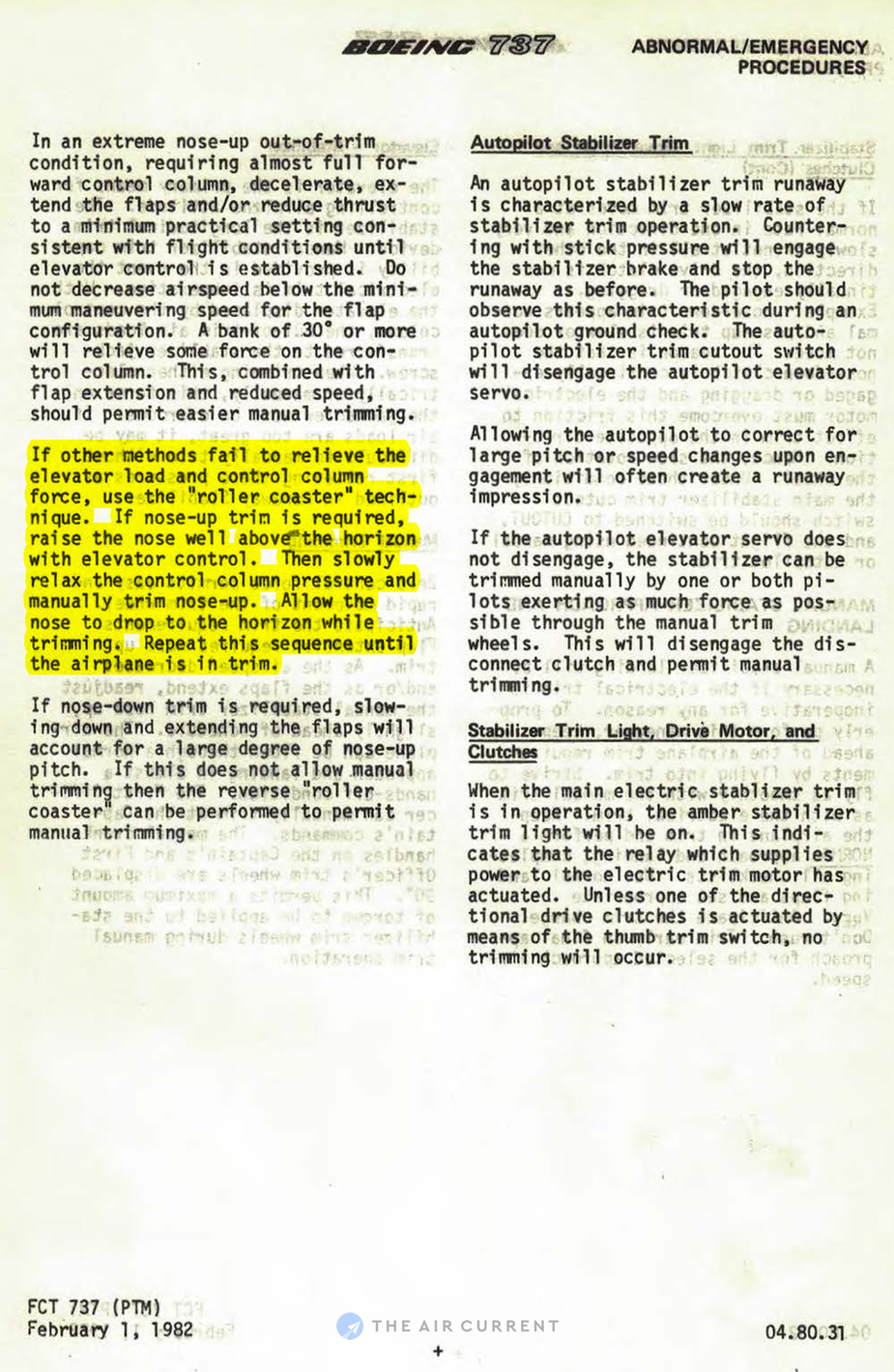Agree, however my scenario is based on various views that have come from ‘those in the industry’.
It could well be wide of the make.
I don’t currently have a type rating on the 737, however all my colleagues already flying the classic and NG say it takes some balls to try the roller coaster method suggested above when you see the ground so close and you are already panicked because you don’t really know what’s happening…
This, combined with the second problem related to the ‘other flight controls’ those pilots encountered, that wasn’t yet made public, is enough for any ATP rated, Boeing enthusiast pilot to second guess his career choice.
The Max saga will eventually be forgotten only if the pilots will endorse the model after this, which sadly for Boeing doesn’t seem to be the case.
Does this roller coaster method does consist in rising the nose high enough to loose speed and retrim the plane? I don’t understand what is “elevator control” out of trim or control column? I mean if crew isn’t able to change trim position because of speed and controls doesn’t have sufficient authority to get nose up, how can they trim the nose up ?

What I don’t understand: Most of the reports talk about Max Power, 94% or so that the engines delivered and that the plane was way too fast even when not in a nose dive.
Why then didn’t they just pull back the throttle ?
EuroFlyer wrote:
Why then didn’t they just pull back the throttle ?
Not sure, but possible because with the engines been ‘under-slung’ adding power would / should have assisted to push the noes up. May be not enough, but at least help to keep it up even if not actual above the horizon !!!
I’d like to know what controls opperate what? For example, does the thumb trim switch work the jackscrew / stabilizer or the elevator.
The elevator (the bit behind the stabilizer) must be controlled / moved by something.
EuroFlyer wrote:
Why then didn’t they just pull back the throttle ?
I read somewhere at least in the Lion Air case, the pilots were applying over 100lbs of force on the control column in an attempt to overcome the out of trim condition. Perhaps the crew simply didn’t have enough arms to simultaneously apply this kind of force to the controls and simultaneously reduce throttle, in an urgent (and probably terrifying) situation?
I recently tried a nose-down out-of-trim situation in a C172 simulator with force-feedback yoke. I crashed, as I was totally unprepared for the amount of force I had to apply.
Nice article indeed. Revealing one thing among others, crew has no idea of what was going on…
Interesting article:
How the Boeing 737 Max Disaster Looks to a Software Developer